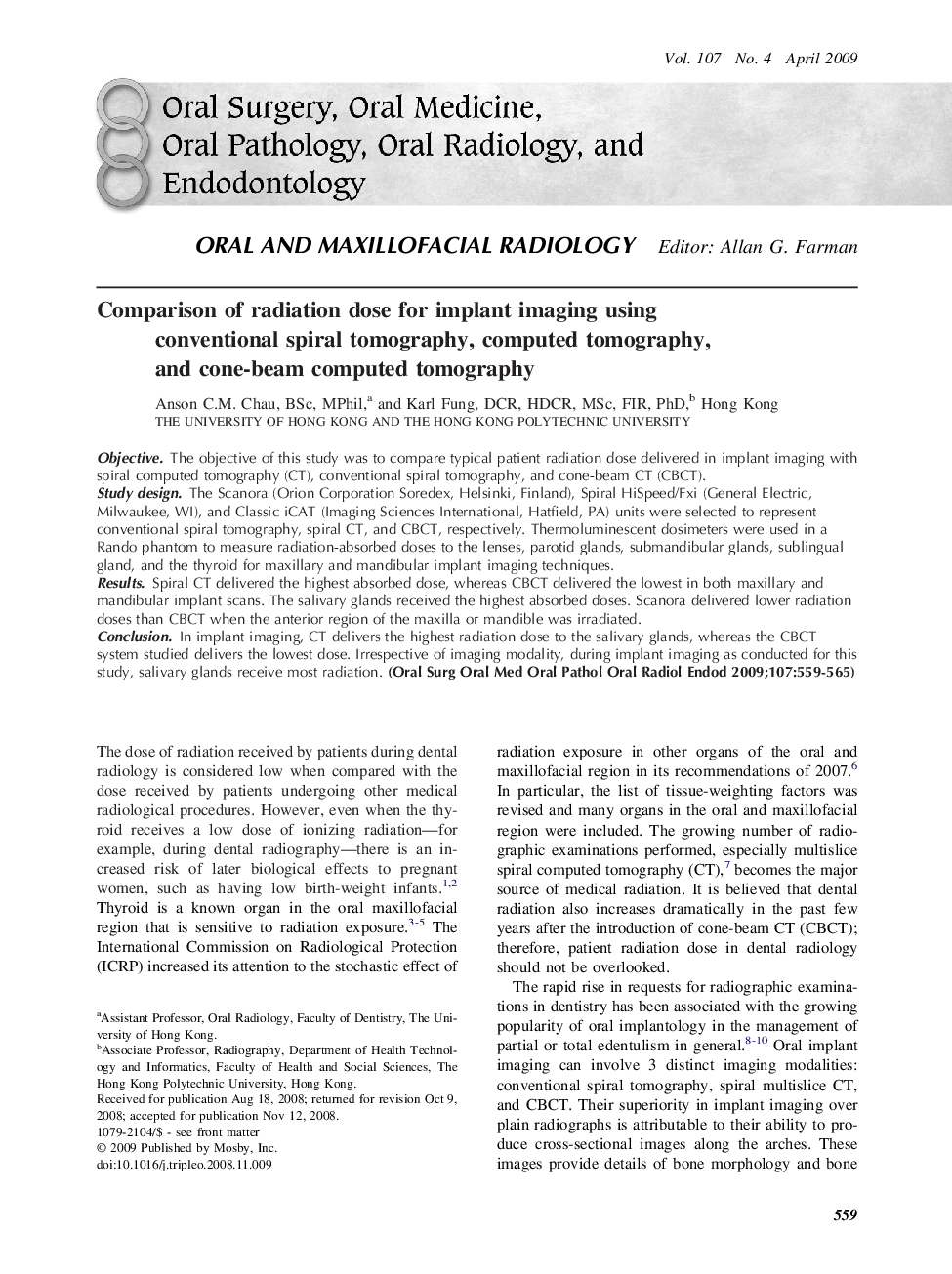| Article ID | Journal | Published Year | Pages | File Type |
|---|---|---|---|---|
| 3168379 | Oral Surgery, Oral Medicine, Oral Pathology, Oral Radiology, and Endodontology | 2009 | 7 Pages |
ObjectiveThe objective of this study was to compare typical patient radiation dose delivered in implant imaging with spiral computed tomography (CT), conventional spiral tomography, and cone-beam CT (CBCT).Study designThe Scanora (Orion Corporation Soredex, Helsinki, Finland), Spiral HiSpeed/Fxi (General Electric, Milwaukee, WI), and Classic iCAT (Imaging Sciences International, Hatfield, PA) units were selected to represent conventional spiral tomography, spiral CT, and CBCT, respectively. Thermoluminescent dosimeters were used in a Rando phantom to measure radiation-absorbed doses to the lenses, parotid glands, submandibular glands, sublingual gland, and the thyroid for maxillary and mandibular implant imaging techniques.ResultsSpiral CT delivered the highest absorbed dose, whereas CBCT delivered the lowest in both maxillary and mandibular implant scans. The salivary glands received the highest absorbed doses. Scanora delivered lower radiation doses than CBCT when the anterior region of the maxilla or mandible was irradiated.ConclusionIn implant imaging, CT delivers the highest radiation dose to the salivary glands, whereas the CBCT system studied delivers the lowest dose. Irrespective of imaging modality, during implant imaging as conducted for this study, salivary glands receive most radiation.
